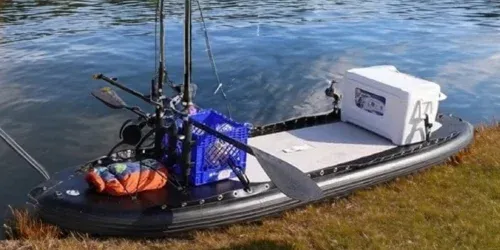Paddleboarding is an exhilarating water sport that combines the thrill of surfing with the tranquility of canoeing. With the advent of inflatable paddle boards, this activity has become increasingly accessible to a wider audience. But is investing in an inflatable paddle board worth it? Let's delve into the pros and cons to help you make an informed decision.

Unpacking the Inflatable Paddle Board
An inflatable paddle board, also known as an iSUP (Inflatable Stand Up Paddleboard), is a portable, easy-to-store version of the traditional paddle board. It's made from sturdy materials such as military-grade PVC, designed to withstand wear and tear while providing a stable platform for paddling.
The inflatable paddle board offers numerous advantages over its solid counterpart, making it an appealing option for both beginners and seasoned paddleboarders alike. However, like any product, it also comes with its own set of drawbacks.

The Bright Side: Advantages of Inflatable Paddle Boards
Portability and Storage
The primary selling point of inflatable paddle boards is their portability. They can be deflated, rolled up, and packed away in a carry bag, making them remarkably easy to transport and store. This feature is particularly handy for those who love to travel or lack ample storage space.

Cost-Effectiveness
Inflatable paddle boards are generally more affordable than hard boards. This cost-effectiveness makes them an attractive option for newcomers looking to try out the sport without making a hefty investment.

Stability
Despite being inflatable, these boards are surprisingly stable, making them ideal for beginners. Their buoyancy and balance make them perfect for a variety of water conditions.
The Science Behind the Stability of Inflatable Paddle Boards
The stability of an inflatable paddle board is primarily attributed to its design and the materials used in its construction. Most inflatable paddle boards are built using drop-stitch technology, a manufacturing process that involves connecting two pieces of PVC with thousands of small polyester threads. The threads hold the top and bottom layers apart under pressure, creating a durable and rigid surface when inflated.
In addition to this, inflatable paddle boards often have a wider and longer design than their solid counterparts. This increases their surface area in contact with water, which in turn enhances their stability, making them less likely to tip over. This is particularly beneficial for beginners who are learning balance and control.
Lastly, the inflation pressure of an inflatable paddle board also contributes to its stability. Higher inflation pressures result in a firmer board, which provides a more solid platform for standing and paddling. Most inflatable paddle boards recommend an inflation pressure of around 15 to 20 psi (pounds per square inch), offering a balance of rigidity and buoyancy that's well-suited for a variety of water conditions.

The Flip Side: Drawbacks of Inflatable Paddle Boards
Durability Concerns
While inflatable paddle boards are made from robust materials, they might not endure the same level of rough usage as hard boards. Sharp objects can potentially puncture the board, leading to leaks.

Performance Limitations
Inflatable SUPs can feel slower and less maneuverable compared to hard boards. This could be a disadvantage for those seeking high-speed paddling or competitive racing. Here's why:
Superior Performance
Solid paddle boards, constructed from materials such as fiberglass, carbon fiber, or epoxy, are typically sleeker and more rigid than their inflatable counterparts. This rigidity leads to less flex and better transfer of power from the paddle stroke, resulting in increased speed across the water. This makes them an excellent choice for those interested in racing or speed paddling.
Enhanced Maneuverability
When it comes to surfing, maneuverability is key. Solid paddle boards, due to their weight and design, tend to offer better control and quick response when navigating waves. They can cut through water more efficiently, allowing for sharper turns and more dynamic maneuvers. This level of responsiveness is generally hard to achieve with inflatable paddle boards.
Inflation and Deflation Time
Inflating and deflating the board can be time-consuming, a factor that might deter some users. However, with practice, or the purchase of an electric pump, this process becomes quicker and more efficient.

The Verdict: Is It Worth Buying an Inflatable Paddle Board?
Despite the potential drawbacks, the advantages of owning an inflatable paddle board significantly outweigh the cons. Their portability, cost-effectiveness, and stability make them a worthwhile investment for most paddleboarding enthusiasts.
When purchasing an inflatable paddle board, prioritize quality and durability. Look for boards made from high-grade materials, and consider factors like size, weight capacity, and personal comfort. Online reviews can provide valuable insights into user experiences and product performance.
Investing in an inflatable paddle board is indeed worth it, offering flexibility, convenience, and affordability. Whether you're a beginner exploring the sport or a seasoned paddleboarder seeking versatility, an inflatable paddle board could be your perfect water companion.

Related Articles:











